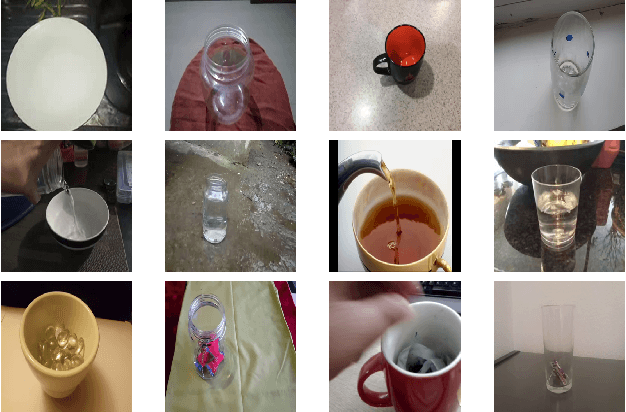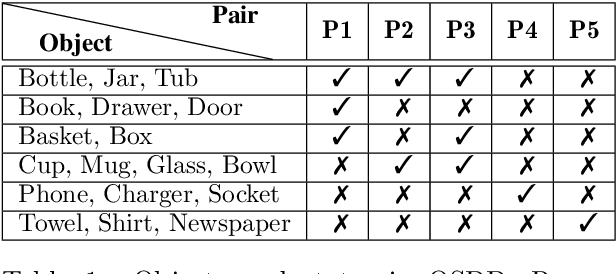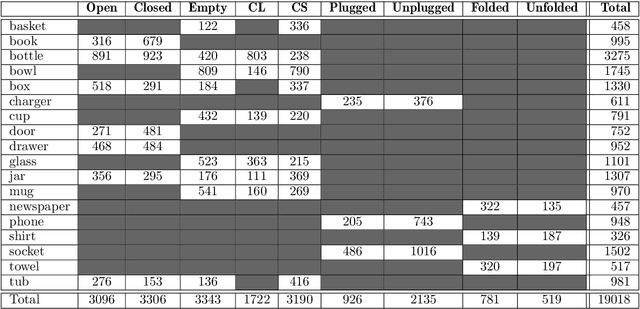Detecting Object States vs Detecting Objects: A New Dataset and a Quantitative Experimental Study
Paper and Code
Dec 15, 2021



The detection of object states in images (State Detection - SD) is a problem of both theoretical and practical importance and it is tightly interwoven with other important computer vision problems, such as action recognition and affordance detection. It is also highly relevant to any entity that needs to reason and act in dynamic domains, such as robotic systems and intelligent agents. Despite its importance, up to now, the research on this problem has been limited. In this paper, we attempt a systematic study of the SD problem. First, we introduce the Object State Detection Dataset (OSDD), a new publicly available dataset consisting of more than 19,000 annotations for 18 object categories and 9 state classes. Second, using a standard deep learning framework used for Object Detection (OD), we conduct a number of appropriately designed experiments, towards an in-depth study of the behavior of the SD problem. This study enables the setup of a baseline on the performance of SD, as well as its relative performance in comparison to OD, in a variety of scenarios. Overall, the experimental outcomes confirm that SD is harder than OD and that tailored SD methods need to be developed for addressing effectively this significant problem.
 Add to Chrome
Add to Chrome Add to Firefox
Add to Firefox Add to Edge
Add to Edge